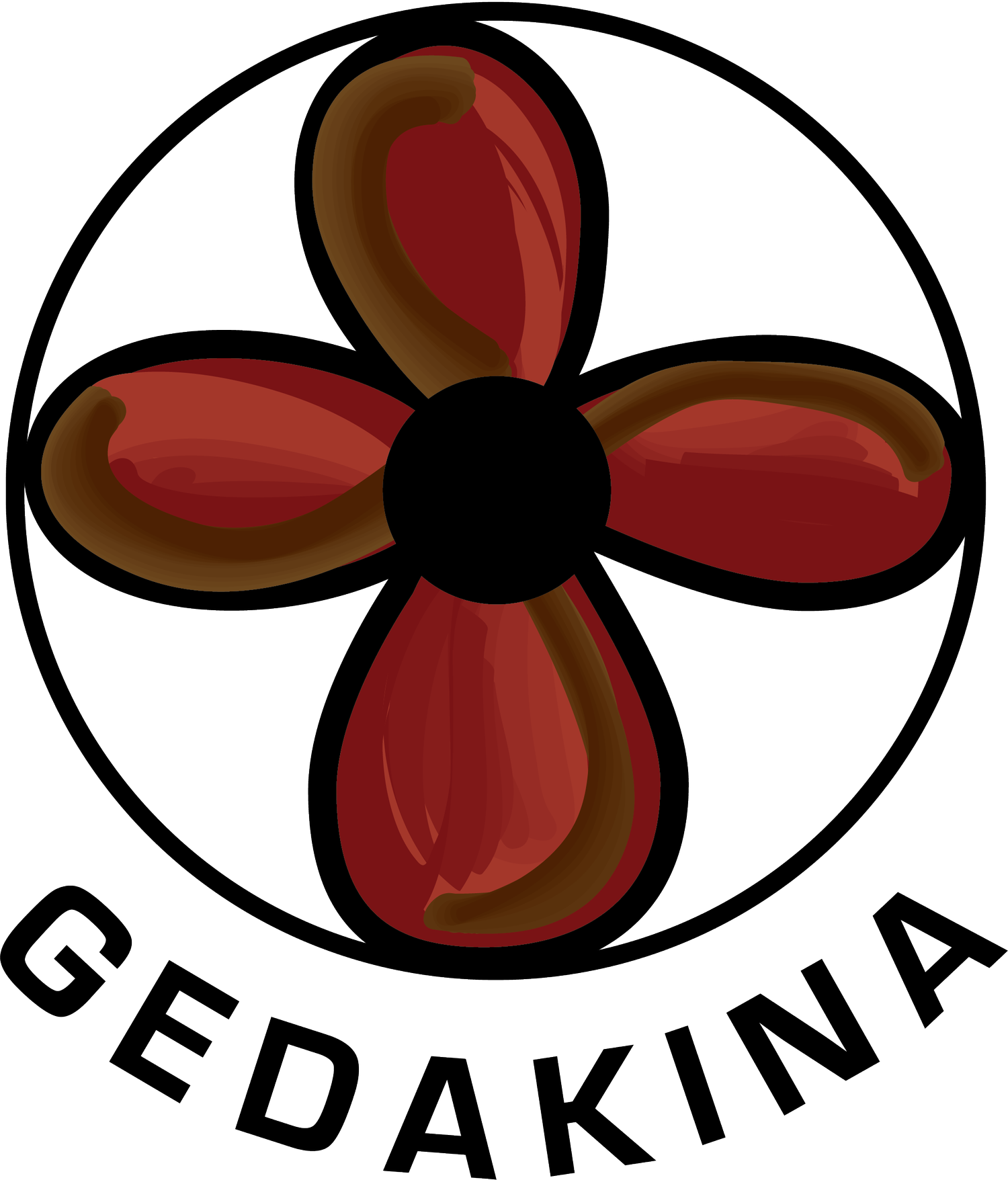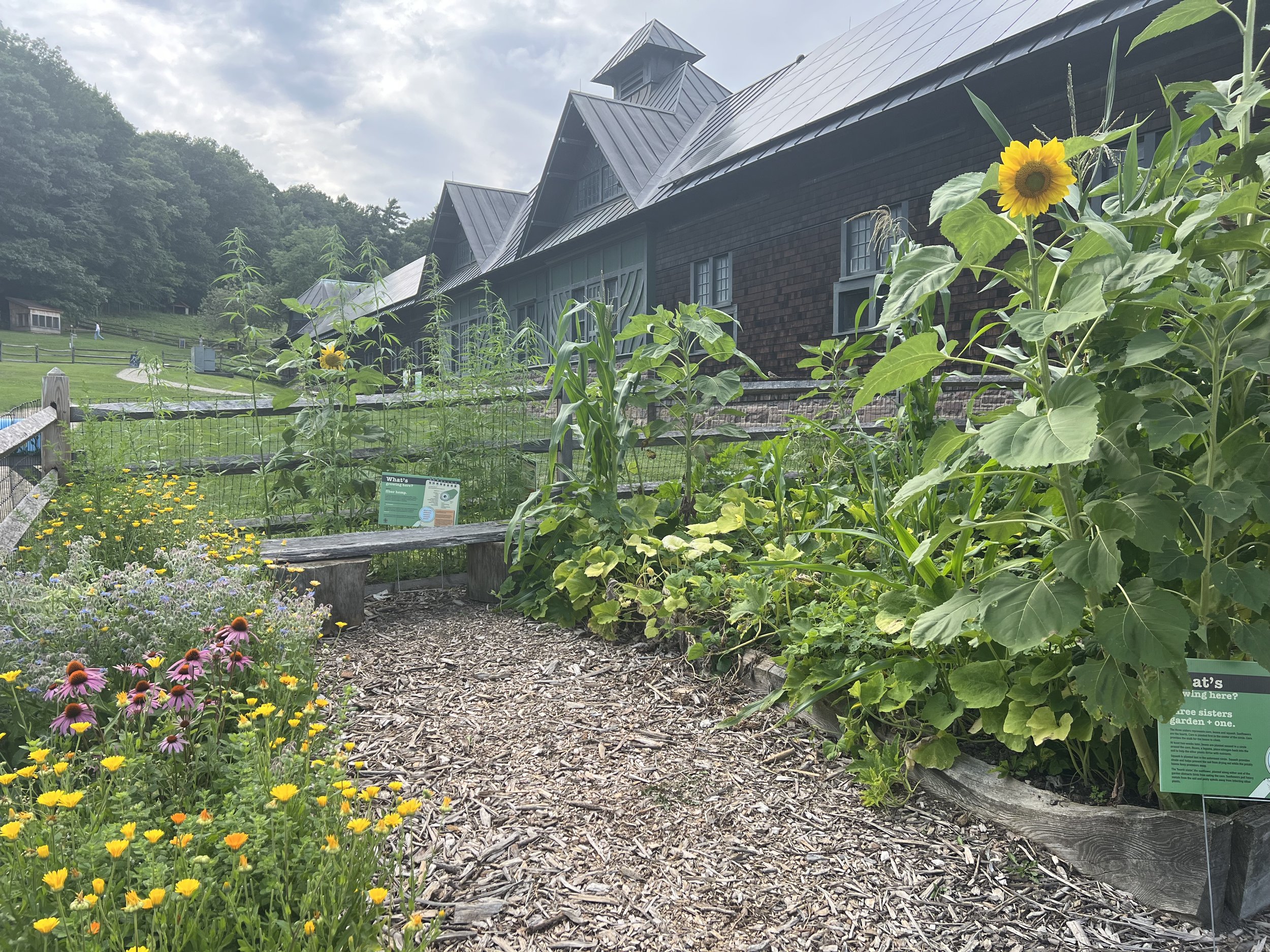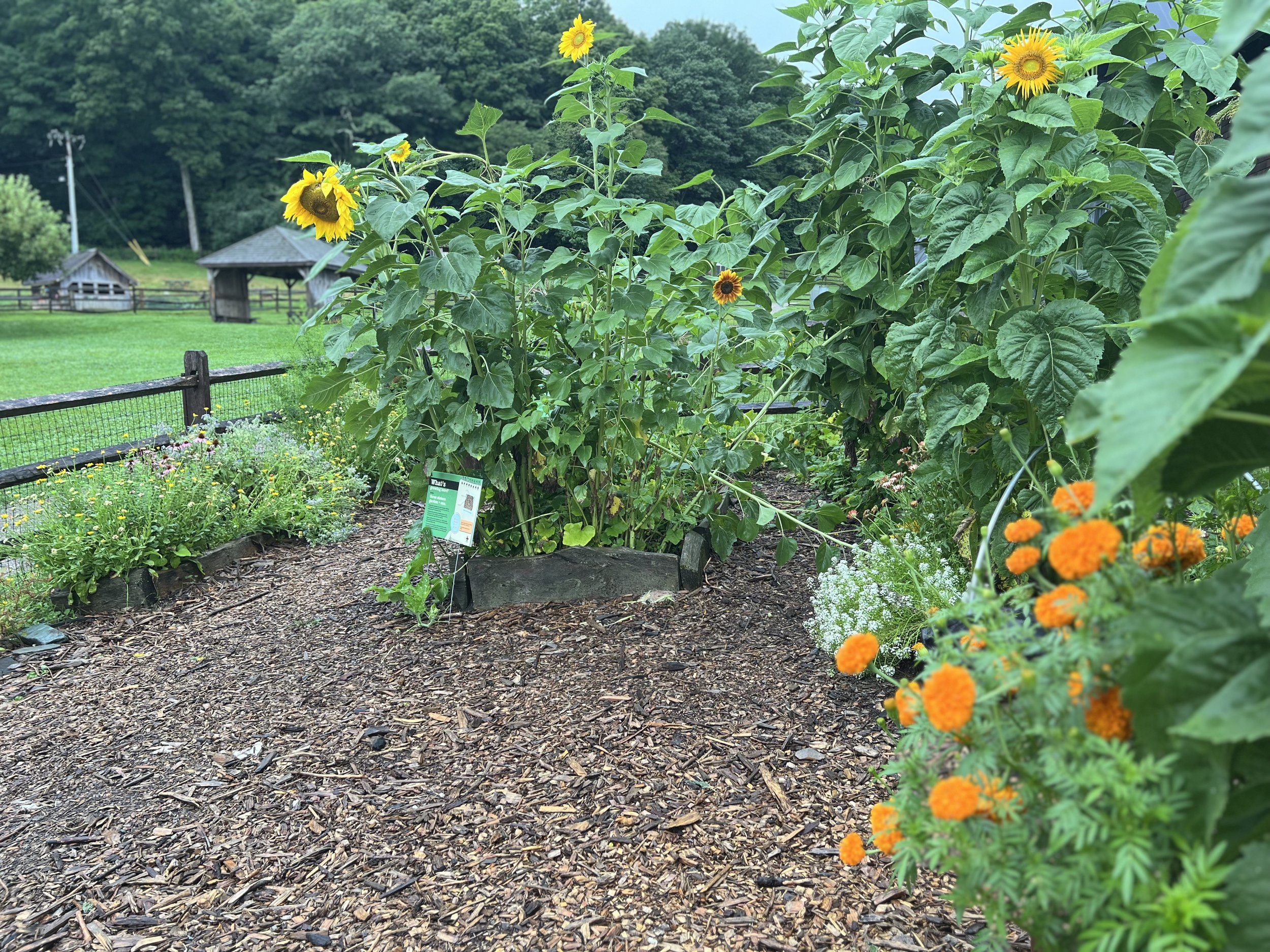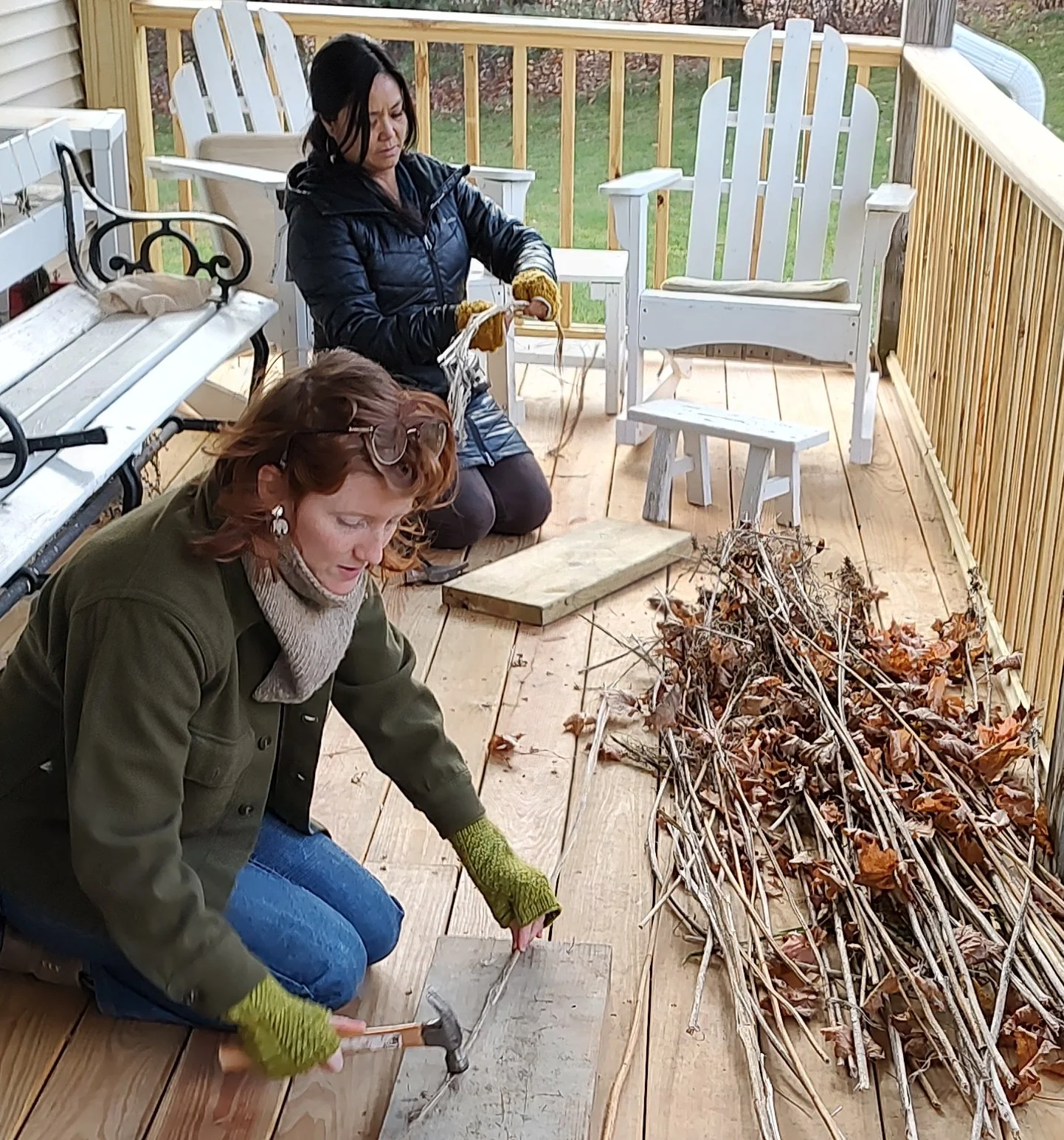Gedakina’s journey into hemp fiber
Fiber hemp has a rich and intriguing agricultural history in the U.S. This past year Gedakina decided to introduce this valuable and multifaceted plant into Gedakina’s educational storytelling and plant fiber hemp alongside our heirloom varieties in our Shelburne Farms’ garden plots at the Children’s Farmyard Gardens.
The Children’s Farmyard Garden located alongside the Farm Barn located on the grounds of Shelburne Farms is open to the public.
Fiber hemp’s history began a millennia ago. Historians and archaeologists have dated the use of hemp for fiber and food by ancient civilizations from seeds found in Japan from 8000 BCE (Kudo et al. 2009) and pottery with hemp fiber found in China dated to 4000 BCE (Li 1973). The plant is generally recognized to be native to Central and Southwest Asia. Hemp’s story in North America is said to have begun in 1545 via Spanish colonization (Fike 2016). Hemp was noted as an important fiber crop in the New England colonies by the mid-1600s. Peak hemp production in the U.S. happened around the 1800s but saw spikes before and during each of the World Wars. Hemp’s geographic range predominantly occurred in the Mid-West. Some hemp that grew feral was considered a noxious weed, but by the mid-1900s other forms of fiber such as jute, sisal and cotton as well as synthetics pushed hemp out of demand. By the late 1930’s all hemp (medicinal and fibrous) was illegal and plastics derived from oil and coal and paper produced from wood pulp dominated the manufacturing and fuel industries and our dependence on environmentally degrading materials was solidified. Oil and petrochemical industries were also threatened by the rise of hemp. Corporate greed promulgated from the industrial barons with names like Hearst and DuPont, and DuPont’s chief financier, Andrew Mellon stood to lose tremendously had hemp sustained a gain in popularity.
Another view into the garden with our medicinals and Three Sisters in full bloom.
For many years Gedakina has planted the Three Sisters; corn, beans and squash along with sunflowers (the fourth sister). In adjacent beds we plant tobacco and an array of medicinal plants. Tobacco is considered sacred by many Indigenous people and is grown here for use in ceremonies. Our medicinal plants are harvested, dried and transformed into herbal salves.
When we approached our fiber hemp explorations, we centered our five Rs placing responsibility, reverence, relationship, reciprocity and respect. Our fiber hemp seeds came from the generous team at the University of Vermont’s Agricultural Extension program. They are a Polish variety and known to do well in this climate due to the trials the UVM Extension program has been rigorously conducting over the years. Our trial plot consisted of a 4’ x 3’ rectangular dimension along the side of the split rail fence identified by the informational sign explaining why its familiar leaves might keep you guessing as to why it looked so much like its sister variety, the high-resin flowering genetics of hemp cultivated for its medicinal value and high cannabinoid content such as CBD and THC.
What’s growing here?
Signage inside the garden helped children and their caregivers take a deeper dive into the story of fiber hemp from the inside out.
In contrast, fiber hemp has been cultivated for its slender, strong, durable fiber. The cannabis plant in general can thrive in a variety of climates, growing as tall as 15 feet and nearly an inch in diameter. It requires little to no water and no chemical fertilizers or pesticides. In New England, it can be planted in May or June and typically harvested in August. Once cut, it is left to dry or ‘ret’ and then washed and bundled. The dried fibers are then processed into a variety of many uses (e.g. textiles, cordage, weavings, animal bedding, building materials, insulation). Once dried and processed, the fibers can be used for textiles, weavings, animal bedding, even building insulation! Hemp also sequesters carbon at a higher rate compared to other crops and even young forests, and its deep root systems are able to clean soils, a process known as bioremediation. Because of its powerhouse of a plant, compared to other field crops, many believe it is an ideal plant to be part of the New Green Revolution.
Once the retting process ended Gedakina, along with our colleagues and friends at Shelburne Farms explored what it would take to hand process a plant that is typically cultivated by the acre and processed mechanically. Seeking out traditional methods of hand processing we explored a few techniques and tools drawing on adjacent industries of weaving and animal husbandry.
We all gathered on a cold day outside processing the hemp we had grown and harvested from the Farmyard Garden. With hammers in hand we pounded and separated the fibers and used a hackle to rake and separate and align the fibers.
Gedakina’s Executive Director, Judy Dow also has a rich agricultural relationship with fiber materials both plant-based and synthetic and recycled. A reporter once quantified the number of materials she had used in her various weaving projects and the number came to two-hundred and seventy eight different fiber-types. Too numerous to mention them all but some of them include: pine needles, pine bark, cedar, ash, linen, salmon skin, gourd, birch, cattails, corn husks, cotton, hemp, sweetgrass, linen, milkweed, elm, willow, red osier dogwood, coconut, bamboo, deer skin and then there’s the recycled materials which include; shoestrings, pizza boxes and many more.
We decided to reconvene back at Shelburne Farms for a weaving lesson from Judy. We were thrilled to learn that two of the Shelburne staff members, Hannah Corbin and Mallory Schmackpfeffer took the fiber processing one step further and practiced dying the fibers with beet root, marigold, black walnut and avocado.
Judy then patiently with the true diligence, skill and love of a life-long educator took care to walk us step-by-step to the weaving process making sure that the entire room came along on the journey of discovering how to weave fiber hemp. This was our final step in our discovery with fiber hemp.
Through this collaboration, it’s our hope that the garden plot will serve as both education and inspiration to learners of all ages, spreading the wisdom of Traditional Ecological Knowledge.
















